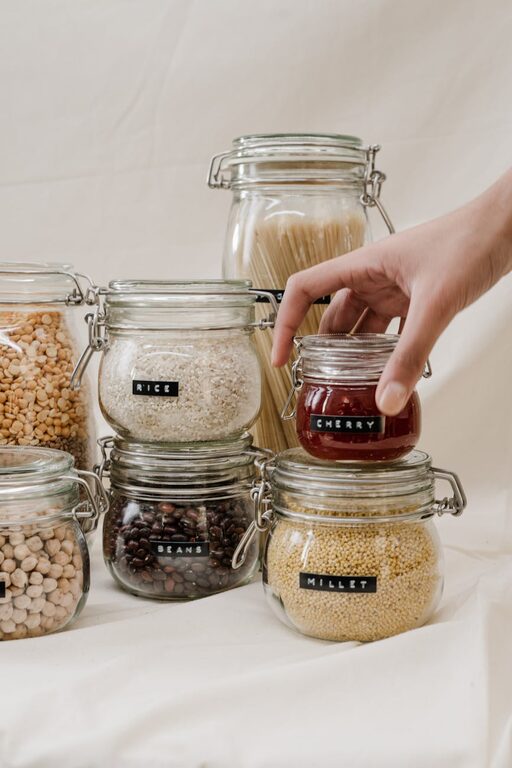Meal planning can often feel overwhelming, especially when you want to prepare something tasty without making an extra trip to the store. Fortunately, your pantry holds a treasure trove of ingredients that can form the base of many nutritious, satisfying meals. Learning how to plan meals from pantry staples not only helps save time and money but also reduces food waste. In this guide, we’ll walk you through practical steps to make the most of your pantry items, along with tips and recipe ideas.
Why Use Pantry Staples for Meal Planning?
Pantry staples are non-perishable or long-lasting food items that you typically keep stocked at home. These include dried grains, canned goods, spices, and more. Using these ingredients:
– Saves you from last-minute grocery runs
– Helps create meals quickly and easily
– Encourages creativity in the kitchen
– Supports budgeting by reducing reliance on fresh, often more expensive items
Step 1: Take Inventory of Your Pantry
Start by assessing what you already have. This saves money and prevents the frustration of buying duplicates.
– Pull everything out and group similar items (canned beans, rice, pasta, sauces)
– Check expiration dates
– Note versatile staples that can be used in multiple dishes
This inventory will be your roadmap when planning meals.
Step 2: Identify Your Pantry Staples
Common pantry staples might include:
– Grains: rice, pasta, quinoa, oats
– Legumes: canned or dried beans, lentils
– Canned vegetables and fruits
– Canned tomatoes and tomato paste
– Broth or stock cubes
– Cooking oils (olive oil, vegetable oil)
– Flour and baking essentials
– Spices and dried herbs
– Nut butters, nuts, and seeds
Having a well-stocked pantry in these categories gives you a lot of flexibility.
Step 3: Plan Meals Around These Staples
Once you know what’s available, think about the meals you can make. Here’s how:
Combine Staples With Fresh Ingredients
If you have a few fresh ingredients like onions, garlic, or vegetables, they help elevate pantry-based dishes.
Focus on Balanced Meals
Incorporate a good mix of carbohydrates, proteins, and fats. For example, pair pasta (carbs) with canned beans or tuna (protein), olive oil (fat), and canned tomatoes or frozen veggies.
Use Theme Nights
Plan by cuisine or food types, such as:
– Mexican night: rice, canned beans, canned tomatoes, and spices like cumin or chili powder
– Italian night: pasta, tomato sauce, olive oil, and herbs like basil or oregano
– Soup night: broth, beans, canned tomatoes, and grains like barley
Step 4: Create a Weekly Meal Plan
– Write down 5–7 meals highlighting pantry essentials
– Note any fresh or frozen items needed and plan a single shopping trip accordingly
– Allow one or two flexible meals for leftovers or creativity
Creating a plan helps reduce decision fatigue and food waste.
Step 5: Sample Meal Ideas Using Pantry Staples
1. Chickpea and Tomato Curry
– Key staples: canned chickpeas, canned tomatoes, spices (cumin, turmeric, curry powder), rice
– Cook rice while sautéing onions and garlic, add spices, chickpeas, and tomatoes, then simmer.
2. Pasta with Tuna and Olives
– Key staples: pasta, canned tuna, canned olives, olive oil
– Boil pasta, toss with tuna, olives, olive oil, and a squeeze of lemon if available.
3. Lentil Soup
– Key staples: dried lentils, broth or stock cubes, canned tomatoes, spices, and optional carrots or celery
– Simmer lentils and vegetables in broth until tender.
4. Oatmeal with Nut Butter and Dried Fruit
– Key staples: oats, nut butter, dried fruit
– Cook oats with water or milk, top with nut butter and fruit for a filling breakfast.
Step 6: Store Pantry Staples Properly
To make your staples last as long as possible:
– Keep dry goods in airtight containers to prevent pests
– Store canned goods in a cool, dry place
– Rotate older items to the front so they’re used first
Additional Tips for Success
– Keep a small notebook or app to track pantry inventory and meal plans
– Experiment with spice blends to vary flavors
– Batch cook meals for easy leftovers
– Be flexible—use similar ingredients interchangeably
—
With some simple planning and creativity, you can turn your pantry staples into a variety of tasty, wholesome meals. This approach not only makes cooking less stressful but also nurtures resourcefulness in the kitchen—a skill everyone can appreciate!

